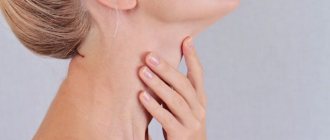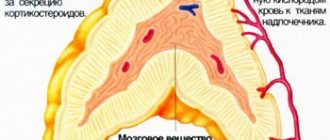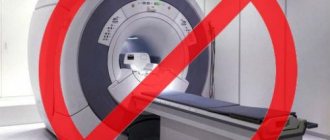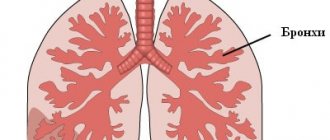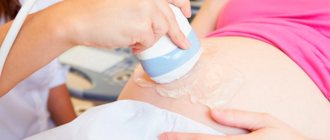Home / Articles / When should you get tested for the hormone adrenaline and other catecholamines?
Adrenaline is one of the hormones from the catecholamine group, which also includes serotonin, dopamine and norepinephrine. Takes an active part in the functioning of the cardiovascular and central nervous systems. It is produced in large quantities during stress, shock and blood loss. Helps maintain vascular tone and normal blood pressure, regulates blood clotting and the immune system's response to inflammatory processes.
Adrenaline and norepinephrine are produced by the adrenal cortex. Suspicion of disruption of their work is the main indication for laboratory diagnosis of catecholamine levels. Find out when you still need to get tested for adrenaline and other hormones and how to prepare for the examination.
Physiology
From a physiological point of view, adrenaline is a biologically active substance that is “released” into the blood in a state of stress. This hormone is produced in the adrenal cortex, however, adrenaline receptors are located in almost all tissues of the body.
Stress is present in our lives to one degree or another almost all the time, because it is a neurohormonal reaction of the body to the influence of any extreme factors, both physical (pain, cold) and psychological (joy or danger). The child received a bad grade at school, and the teacher scolded him at the blackboard - in this situation, your child also received a certain dose of adrenaline. It turns out that adrenaline, as a physiological reaction to stress, is constantly present in our body, however, its amount varies depending on the degree of your experiences.
Catecholamines (adrenaline, norepinephrine, dopamine) and serotonin in the blood
Adrenaline, norepinephrine, dopamine, serotonin are biogenic amines that are hormones and neurotransmitters. Their content increases significantly in biological fluids in some neuroendocrine neoplasms. * The study determines the quantity of each indicator separately.
Synonyms Russian
Free catecholamines in the blood.
English synonyms
Catecholamines - adrenaline, norepinephrine, dopamine + serotonin.
Research method
High performance liquid chromatography.
Units
Pg/ml (picograms per milliliter), ng/ml (nanograms per milliliter).
What biomaterial can be used for research?
Venous blood.
How to properly prepare for research?
- Children under 1 year of age should not eat for 30-40 minutes before the test.
- Children aged 1 to 5 years should not eat for 2-3 hours before the test.
- Eliminate avocados, bananas, eggplants, pineapples, plums, tomatoes, and walnuts from your diet for 72 hours before the test.
- Do not eat for 12 hours before the test; you can drink clean still water.
- Discontinue (in consultation with your doctor) sympathomimetics 14 days before the study.
- Completely avoid (in consultation with your doctor) taking medications for 24 hours before the test.
- Avoid physical and emotional stress for 24 hours before the test.
- Do not smoke for 2 hours before the test.
General information about the study
Catecholamines are a group of similar hormones produced by the adrenal medulla. The main catecholamines are dopamine, adrenaline (epinephrine) and norepinephrine. They are released into the blood in response to physical or emotional stress and are involved in the transmission of nerve impulses to the brain, promote the release of glucose and fatty acids as energy sources, and dilate bronchioles and pupils. Norepinephrine constricts blood vessels, increasing blood pressure, while adrenaline increases heart rate and stimulates metabolism. After completing their action, these hormones are broken down into physiologically inactive substances (homovanillic acid, normetanephrine, etc.).
Normally, catecholamines and their breakdown products are present in the body in small quantities. Their content increases significantly for a short time only under stress. However, chromaffin and other neuroendocrine tumors can produce large amounts of catecholamines, leading to significant increases in the levels of these hormones and their breakdown products in the blood and urine. This threatens long-term or short-term increases in blood pressure and, accordingly, severe headaches. Other symptoms of elevated catecholamines include shaking, sweating, nausea, restlessness, and tingling in the extremities. In addition to catecholamines, pheochromocytomas can synthesize serotonin, adrenocorticotropic hormone, vasoactive intestinal peptide, somatostatin and other hormones. There is no correspondence between the size of the tumor, the level of catecholamines in the blood and the clinical picture.
Serotonin is not a catecholamine, but also belongs to the group of biogenic amines with hormonal and neurotransmitter activity. It is synthesized from the amino acid tryptophan and is stored in enterochromaffin cells of the gastrointestinal tract (80-95% of the total), various structures of the brain, mast cells of the skin, platelets and some other endocrine organs. Serotonin lowers the threshold of pain sensitivity, regulates the function of the pituitary gland, affects vascular tone, blood clotting, motility and secretory activity of the gastrointestinal tract.
Approximately 90% of chromaffin tumors are located in the adrenal glands. Most are benign and do not spread beyond the adrenal glands, although they may continue to grow. Without further treatment, as the tumor grows over time, symptoms of the disease sometimes become more severe. High blood pressure caused by a chromaffin tumor can cause kidney and heart damage and even hemorrhage or a heart attack.
In most cases, these tumors are removed surgically, after which the catecholamine levels are significantly reduced, and tumor-related symptoms and complications are alleviated or disappear altogether.
A blood test reveals the amount of the hormone at the time of taking the test, while a urine test reveals the amount of the hormone over the previous 24 hours.
What is the research used for?
- For the diagnosis of chromaffin tumors in symptomatic patients.
- To monitor the effectiveness of treatment of a chromaffin tumor, in particular after its removal, to ensure that there are no relapses.
When is the study scheduled?
- If a chromaffin tumor is suspected.
- If the patient has chronic hypertension, accompanied by headache, sweating, and rapid pulse.
- When hypertension is not treatable (since hypertensive patients with chromaffin tumors are often resistant to traditional therapy).
- If an adrenal tumor or neuroendocrine tumor was detected during a scan, or if the patient has a hereditary predisposition to their formation.
- When monitoring the condition of patients who have already been treated for chromaffin tumor.
What do the results mean?
Reference values
- Adrenalin
| Age | Reference values, pg/ml |
| 2-11 days. | 36.0 — 400.0 |
| 11 days — 4 months | 55.0 — 200.0 |
| 4 months - 1 year | 55.0 — 440.0 |
| 1-2 years | 36.0 — 640.0 |
| 2-3 years | 18.0 — 440.0 |
| 3-18 years | 18.0 — 460.0 |
| > 18 years old | 10.0 — 200.0 |
- Norepinephrine
| Age | Reference values, pg/ml |
| 2-11 days. | 170.0 — 1180.0 |
| 11 days — 4 months | 370.0 — 2080.0 |
| 4 months - 1 year | 270.0 — 1120.0 |
| 1-2 years | 68.0 — 1810.0 |
| 2-3 years | 170.0 — 1470.0 |
| 3-18 years | 85.0 — 1250.0 |
| > 18 years old | 80.0 — 520.0 |
- Dopamine: 5.6 - 44 pg/ml.
- Serotonin: 50 - 220 ng/ml.
Since the results of this test can be influenced by many factors, and chromaffin tumors are quite rare, the results are often false positive. To make a confident diagnosis, a general examination of the patient is necessary: an assessment of his physical and emotional state, the medications he takes and the food he eats. Once interfering factors have been identified and corrected, the test is often repeated to determine whether catecholamine levels will still be high. In addition, a test for metanephrine in the blood and/or urine and a magnetic resonance imaging scan of the tumor may be ordered to confirm the results.
Elevated catecholamine levels in a patient who has previously been treated for a chromaffin tumor indicate recurrence of the tumor or that therapy was not entirely effective.
If the concentration of catecholamines is normal, then the presence of a chromaffin tumor is unlikely. However, these tumors do not always produce catecholamines at a constant rate. If there have been no recent exacerbations of hypertension, then the concentration of catecholamines may be close to normal even with existing pheochromocytoma.
Possible causes of increased serotonin levels: carcinoid tumors; medullary thyroid cancer; testicular tumors; celiac disease; endocarditis; dumping syndrome; acute intestinal obstruction; cystic fibrosis; acute myocardial infarction; taking medications (paracetamol, diazepam, naproxen, pindolol). Reasons for decreased serotonin levels: mastocytosis; phenylketonuria; Down syndrome; carcinoid tumors of the rectum; Hartnup's disease; taking medications (ethanol, imipramine, isoniazid, sulfasalazine).
What can influence the result?
- Medicines you are taking (acetaminophen, aminophylline, amphetamines, appetite suppressants, caffeine-containing medications, chloral hydrate, clonidine, dexamethasone, diuretics, epinephrine, ethanol, insulin, imipramine, lithium, methyldopa, nicotine, nitroglycerin, nasal drops, tricyclic antidepressants, and vasodilators ).
- Food consumed (tea, coffee, alcohol).
- Stress.
Important Notes
- Although catecholamine tests can help diagnose chromaffin tumors, they do not indicate where the tumor is located, whether it is benign (although most are), or whether it is one tumor or several.
- The amount of catecholamines produced does not necessarily correspond to the size of the tumor, although it tends to increase as the tumor grows larger.
Also recommended
- Catecholamines (adrenaline, norepinephrine, dopamine) in urine
- Catecholamines (adrenaline, norepinephrine, dopamine) and their metabolites (vanillylmandelic acid, homovanillic acid, 5-hydroxyindoleacetic acid) in urine
- Catecholamine metabolites (vanillylmandelic acid, homovanillic acid, 5-hydroxyindoleacetic acid) in urine
- Neuron-specific enolase (NSE)
- Plasma glucose
Who orders the study?
Endocrinologist, cardiologist, pediatrician, general practitioner, surgeon.
Literature
- Eisenhofer G., Siegert G, Kotzerke J, Bornstein SR, Pacak K. Current progress and future challenges in the biochemical diagnosis and treatment of pheochromocytomas and paragangliomas. Horm Metab Res. 2008 May;40(5):329-37.
- Ganim RB, Norton JA: Recent advances in carcinoid pathogenesis, diagnosis and management. Surg Oncol 2000;9:173-179.
- Ghevariya V, Malieckal A, Ghevariya N, Mazumder M, Anand S. Carcinoid tumors of the gastrointestinal tract. South Med J 2009 Oct;102(10):1032-40.
- Vinik AI et al. NANETS consensus guidelines for the diagnosis of neuroendocrine tumor. Pancreas. 2010 Aug;39(6):713-34.
- Pacak K et al. Pheochromocytoma: recommendations for clinical practice from the First International Symposium. October 2005. Nat Clin Pract Endocrinol Metab. 2007 Feb;3(2):92-102.
Why adrenaline?
Where did the name of this hormone come from? Everything is very simple! As already mentioned, adrenaline is a hormone of the adrenal glands, and in English the word “adrenal” sounds like “adrenal”, which gives the name to this hormone.
Like all processes in our body, adrenaline plays a certain role, its main function is mobilization. In stressful situations, adrenaline mobilizes all the body's forces for self-defense. This phenomenon is especially necessary in case of injuries, when, being in a state of shock, a person does not feel pain in full force, while a strong painful shock can lead to death. Hormones block pain, dulling it for some time after injury.
Patient preparation rules
Standard conditions:
On an empty stomach after 8 hours. period of fasting (unless other conditions are determined by the doctor), in accordance with the schedule for taking biomaterial in the ML department of DILA.
Before drawing blood, the patient needs to lie down for 30 minutes.
Pre-registration by calling the Unified Information Service ML DILA.
Important:
For three days before and during the study, exclude from the diet foods and drinks rich in amines (vanilla, chocolate, coffee, cocoa, tea, cola, beer, bananas, avocados, tomatoes, alcohol), and do not smoke.
Agree with your doctor about the possibility of discontinuing medications: tetracycline antibiotics, reserpine, tranquilizers, adrenergic blockers, MAO inhibitors, sympathomimetics.
You can add this study to your cart on this page
"Fear has big eyes"
It is unlikely that you have ever seriously thought about the origin of this proverb, but it is also associated with adrenaline. In a state of fear, our pupils dilate precisely due to the influence of this hormone; also in stressful situations, the heartbeat quickens, blood vessels narrow, and the digestive organs slow down their work. The production of adrenaline increases the amount of sugar in the blood; also, under its influence, organs and systems need more oxygen. However, the effect of adrenaline is short-lived; after 5 minutes its effect ends, this is explained by the fact that in response to the release of adrenaline in the body, systems for its inactivation are turned on.
Adrenaline and mood
“It seems I got up on the wrong foot today”, “The weather is bad outside - that’s what’s causing depression” - this is how we often try to explain our bad mood. But everything in life is not accidental, and the root of a good or bad mood lies, first of all, in our body, or rather in hormones. One of the regulators of our emotions is adrenaline.
Each person has his own specific scale of emotions, that is, everyone feels when and how much adrenaline they need, depending on this they behave in a certain way.
Keep in mind that prolonged absence of adrenaline can trigger the development of depression. Therefore, if you feel like you don’t want to do anything for a day in a row, urgently pull yourself together and go... where? – everyone must decide for themselves. The best medicine is, perhaps, sport. For some, an hour-long workout in the pool is enough to lift their spirits, while for others they will need to travel 1000 kilometers from the city and jump with a parachute, and more than once! In any case, you will immediately feel how your mood has improved and there is a surge of vitality and energy; You may be tired physically, but definitely not emotionally.
There is a special type of people who are called “emotional junkies”, because they need adrenaline in large quantities, therefore, they are constantly looking for adventures on their own. Driving a car at breakneck speed, climbing to the top, risk and more risk - this is just their style!
Adrenaline
During the treatment period, it is recommended to determine the concentration of potassium ions in the blood serum, measure blood pressure, diuresis, minute volume of blood flow, ECG, central venous pressure, pressure in the pulmonary artery and wedge pressure in the pulmonary capillaries.
Excessive doses of epinephrine during myocardial infarction may increase ischemia by increasing myocardial oxygen demand.
Increases plasma glucose levels, which is why diabetes mellitus requires higher doses of insulin and sulfonylurea derivatives.
Epinephrine is not advisable for long-term use (constriction of peripheral blood vessels, leading to the possible development of necrosis or gangrene).
Use for the correction of arterial hypotension during labor is not recommended as it may delay the second stage of labor; when administered in large doses to weaken uterine contractions, it can cause prolonged uterine atony with bleeding. When stopping treatment, the dose should be reduced gradually, because Sudden discontinuation of therapy may lead to severe hypotension.
Easily destroyed by alkalis and oxidizing agents. Sodium metabisulfite, which is part of the drug, may cause an allergic reaction, including symptoms of anaphylaxis and bronchospasm, especially in patients with a history of asthma or allergies. Epinephrine should be used with caution in patients with tetraplegia due to the increased sensitivity of these individuals to epinephrine.
A sharp increase in blood pressure when using adrenaline can lead to the development of hemorrhage, especially in elderly patients with cardiovascular diseases.
Patients with Parkinson's disease may experience psychomotor agitation or temporary worsening of symptoms of the disease when using epinephrine, and therefore caution should be exercised when using epinephrine in this category of individuals.
Do not re-inject into the same areas to avoid the development of tissue necrosis. Injection of the drug into the gluteal muscles is not recommended.
Epinephrine should be used with caution in elderly patients, patients with coronary heart disease, arterial hypertension, diabetes mellitus, hyperthyroidism, prostatic hyperplasia and urinary disorders.
Particular care must be taken when using epinephrine in patients with long-standing bronchial asthma, emphysema, and organic heart disease (cor pulmonale).
Epinephrine may cause cardiac arrhythmias and myocardial ischemia, especially in patients with coronary artery disease or cardiomyopathy.
Epinephrine increases cardiac output and causes peripheral vasoconstriction, which can lead to pulmonary edema.
Epinephrine causes constriction of the renal arterioles, which can lead to oliguria and renal failure.
Intramuscular injection of epinephrine should be carried out in the anterolateral surface of the thigh (in the vastus lateralis muscle). Injection of the drug into smaller muscles (for example, the deltoid muscle) is not recommended.
Rare cases of severe skin and soft tissue infections, including Clostridia necrotizing fasciitis and muscle necrosis (gas gangrene), have been reported at the site of epinephrine administration for the treatment of anaphylaxis. Patients should be warned to seek immediate medical attention if symptoms of infection such as persistent redness, warmth, swelling, or tenderness at the epinephrine injection site occur.
The drug should not be injected into the vessels of the fingers, hands and feet, because Epinephrine is a powerful vasoconstrictor and can lead to disruption of blood supply and tissue necrosis (gangrene).
Do not use the drug if color changes or sediment appears in the solution. The unused portion of the solution should be discarded.
Sources of adrenaline
Very strong sensations, which are accompanied by the production of large doses of adrenaline, are always stored in our memory. The production of this hormone is primarily promoted by sports, especially dangerous sports, as well as travel, gambling (cards, roulette, etc.). Businessmen also very often experience a similar emotional state, since their professional activities involve constant risk. In this case, these are financial risks; they do not pose a threat to health and life, but such stressful situations contribute to the release of large doses of adrenaline. A number of professions can also be called “adrenaline”: firefighters, surgeons, journalists, etc. Emotional addicts, who have already been discussed, often choose these particular professions for themselves, since the constant presence of adrenaline is vital for them.
Adrenaline is a very important and very necessary hormone. This is a kind of doping and source of energy. Without him, our life would be boring and uninteresting!
